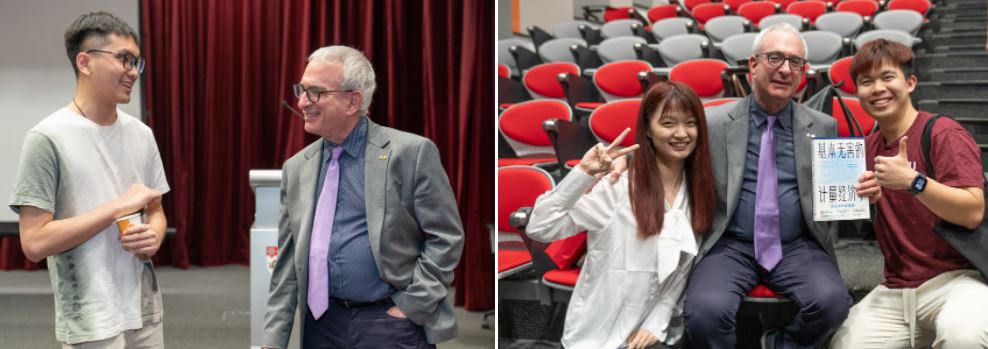2023 Lee Kong Chian Distinguished Professors
Prof Brian Kobilka - Structural Insights into G Protein Coupled Receptor Activation: Implications for Drug Discovery
Our distinguished speaker, Prof Brian Kobilka, Nobel Prize in Chemistry 2012, is the Professor of Molecular and Cellular Physiology, and Hélène Irwin Fagan Chair in Cardiology at Stanford University School of Medicine. Held as a partner event of the Global Young Scientists Summit on 18 January 2023 at the Tan Chin Tuan Lecture Theatre, the Nobel public lecture was sponsored by Lee Foundation.
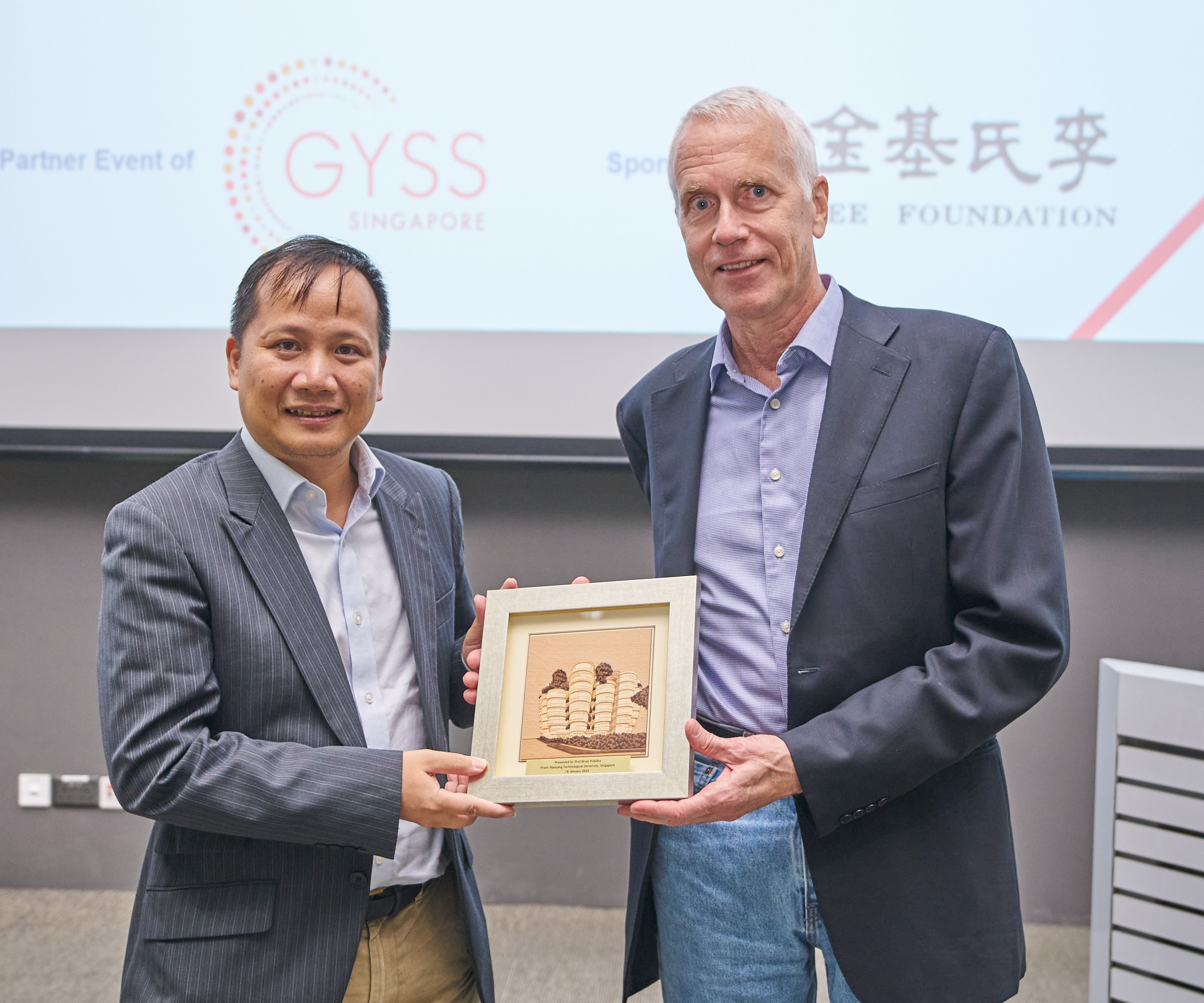 Prof Phan Anh Tuan (Chair, SPMS) presenting the memento to Prof Kobilka.
Prof Phan Anh Tuan (Chair, SPMS) presenting the memento to Prof Kobilka.
Prof Kobilka’s talk was titled “Structural Insights into G Protein Coupled Receptor Activation: Implications for Drug Discovery”, which was the amazing work that let him to achieve the 2012 Chemistry Nobel Prize, along with Prof Robert Lefkowitz. He shared briefly about his own background and how he eventually went into science. The journey towards the discovery of the inner workings of G-protein Coupled Receptors was not smooth-sailing, especially with the limitations of science and technologies back in the 20th century. For the longest time, it has been a mystery as to how cells could react with their environment. In 1968, Prof Lefkowitz began to use radioactivity to trace cells’ receptors via the attachment of an iodine isotope. Fortunately, he was able to uncover various receptors and one of it is the β-adrenergic receptor. His research team eventually extracted it and gained an insight of the workings of this receptor.
In the 1980s, Prof Brian Kobilka joined Prof Lefkowitz’s group and successfully isolated the gene that codes for the β-adrenergic receptor. When they analysed the gene, they also discovered that the receptor was similar to one of the receptors in the eye that captures light. Eventually, it was later known that this family of receptors look and act in similar ways, now referred as G-protein-couple-receptors. Their research on this kind of receptor have contributed to approximately half of all medications used today. Furthermore, in 2011, Prof Kobilka achieved another breakthrough by capturing an image of the exact point where the β-adrenergic receptor is activated by a hormone and sent a signal into the cell.
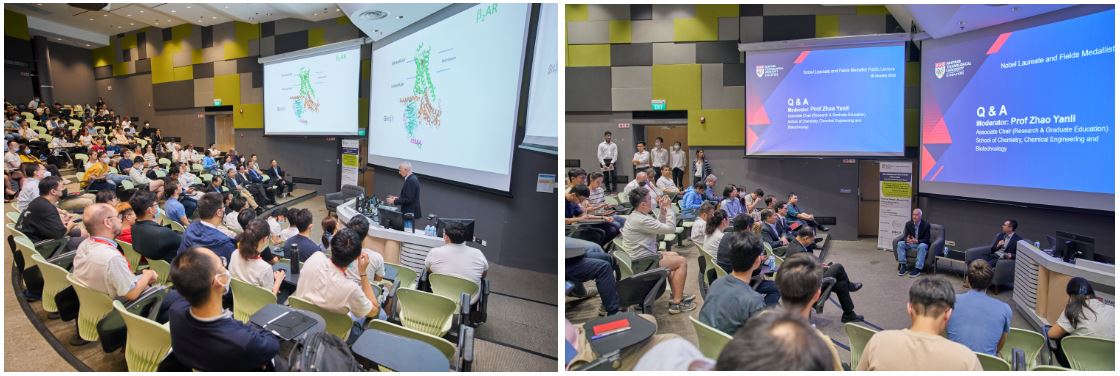 Prof Brian Kobilka's enlightening talk on his breakthrough research in G Protein Coupled Receptor.
Prof Brian Kobilka's enlightening talk on his breakthrough research in G Protein Coupled Receptor.
During the Q&A session, there were several intriguing questions asked such as the use of camelid antibody fragments (nanobodies), that only has the heavy chain, to stabilise the active state of GPCR structures, instead of the conventional antibodies that has light and heavy chains. Prof Kobilka shared that through trial and error, they managed to find the most suitable ones to stabilise the active conformation via a series of binding assays to ascertain the stability. Another question was asked how did becoming a researcher from a practical doctor impacted him in any ways. Prof Kobilka replied, “If I wasn’t a physician, I would probably not be in the field.” Close to 300 attendees attended the Nobel public lecture.
 Prof Kobilka engaging in Q&A session with the enthusiastic students, moderated by Prof Zhao Yanli (Assoc Chair, Research & Graduate Education, CCEB).
Prof Kobilka engaging in Q&A session with the enthusiastic students, moderated by Prof Zhao Yanli (Assoc Chair, Research & Graduate Education, CCEB).
Evelias Yan | Masters Student, School of Chemistry, Chemical Engineering and Biotechnology, NTU
Our eminent speaker, Prof Duncan Haldane, Sherman Fairchild University Professor of Physics from Princeton University, is the Nobel Prize winner in Physics in 2016 for “the theoretical discoveries of topological phase transitions and topological phases of matter”.
Held on 5 January 2023 at the Tan Chin Tuan Lecture Theatre, the Nobel public lecture was sponsored by the Lee Foundation and it was well attended by around 300 attendees.
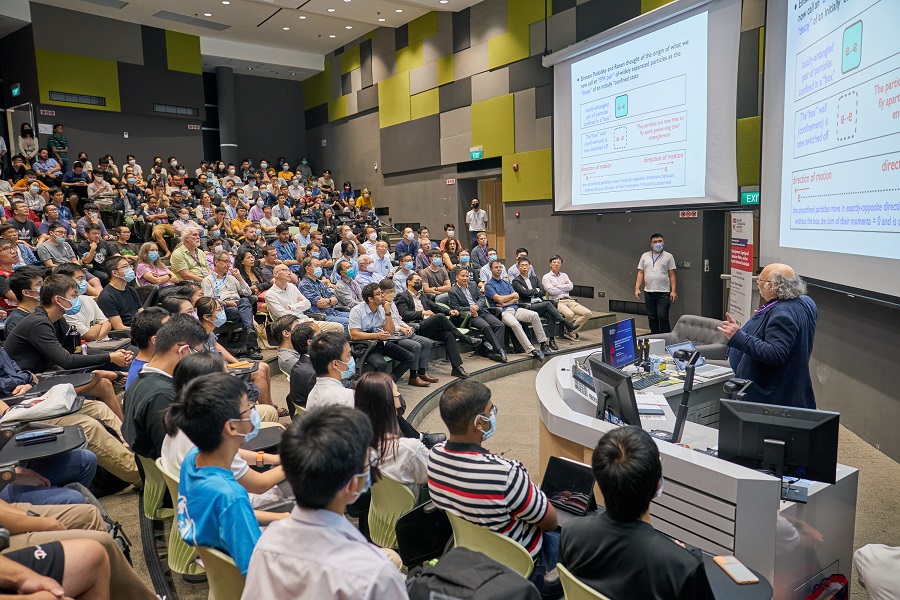
Prof Haldane addressed the lecture theatre packed with audiences and captivated their attention as he took them on a colourful scientific journey entitled “Entanglement, Topological Quantum Matter and the Second Quantum Revolution”. He highlighted the development of the understanding regarding quantum mechanics over the years and how it is useful in the development of intriguing materials and advanced technologies.
Traveling through time and citing a lineage of giants, Prof Haldane talked about the early works in quantum mechanics by Weinberg, Dirac, Faraday and later by Richard Feynman with discussions on the atomic scale machines and computers in 1959.
Prof Haldane also gave his thought on the origin of EPR (Einstein, Podolsky and Rosen) pair, followed by discussion on the recent years of advances in the area, which has realised that quantum condensed matter can exhibit unexpected properties associated with long range quantum entanglement. He presented how entanglement has proven to be fuel for quantum information processing. He quoted “the key idea of entanglement which serves as the bold property of quantum mechanics which draws as the hope for a topologically protected quantum computer”.

[From left:] Nanyang Asst Prof Yang Bo (SPMS), Assoc Prof Elbert Chia (SPMS), Prof Liew Wen Siang (Assoc Chair, Research, SPMS), Prof Juan-Pablo Ortega (Assoc Chair, Faculty, SPMS), Prof Phan Anh Tuan (Chair, SPMS), Nobel Laureate Prof Duncan Haldane, Prof Sum Tze Chien (Director, IAS) and Prof Guan Yong Lian (Assoc Vice President, Infrastructure & Programmes, NTU President's Office).
In his passionate and precise talking about the fundamentals of quantum mechanics, Prof Haldane said that history tell us that basic research and technology are two sides of the same coin - without basic research, novel technologies cannot be invented. Through time, scientists have made discoveries with no immediate applications, but serendipitously or through combinations of breakthroughs, after a long maturation time, these discoveries have led to innumerable inventions that have revolutionised our daily lives, for example, personal computers, lasers, MRI scanners, or the GPS software guiding us to our exact destinations. Prof Haldane said that this is the time for a “second quantum revolution” and it will be helpful in further deepening our understanding of quantum mechanics and development of new technologies in the future. He said that it is a realistic dream for him to see the development of topologically protected Qubit.
As a parting thought, Prof Duncan Haldane concluded his lecture by enlightening the audience with The Moral that need three communities to collaborate with one another: the Toy-Model Builders - to find what kind of unexpected physics can in principle occur, deep mathematical understanding of what principles explain the unexpected toy-model physics, and the cutting-edge materials science to bring the theory to reality.
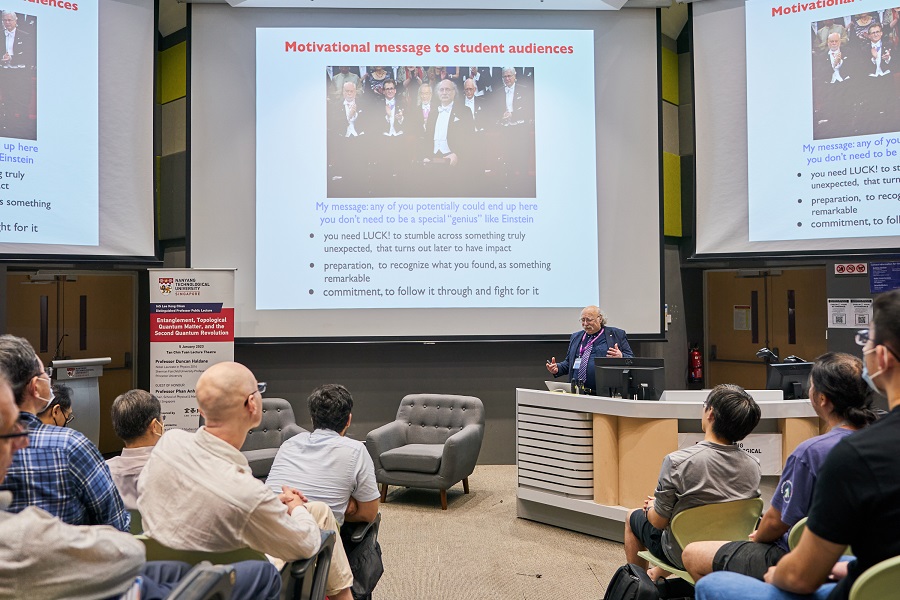
In his motivational message to the student audience, he quoted:
“Any of you potentially could end up being a great scientist, you don't need to be a special "genius" like Einstein. You need LUCK to stumble across something truly unexpected, that turns out later to have impact. The key is to be prepared, and the ability to recognise what you found as something remarkable. We also need the commitment to follow it through and fight for it”.
Abhishek Singh | PhD student, School of Physical and Mathematical Sciences, NTU















/enri-thumbnails/careeropportunities1f0caf1c-a12d-479c-be7c-3c04e085c617.tmb-mega-menu.jpg?Culture=en&sfvrsn=d7261e3b_1)

/cradle-thumbnails/research-capabilities1516d0ba63aa44f0b4ee77a8c05263b2.tmb-mega-menu.jpg?Culture=en&sfvrsn=1bc94f8_1)


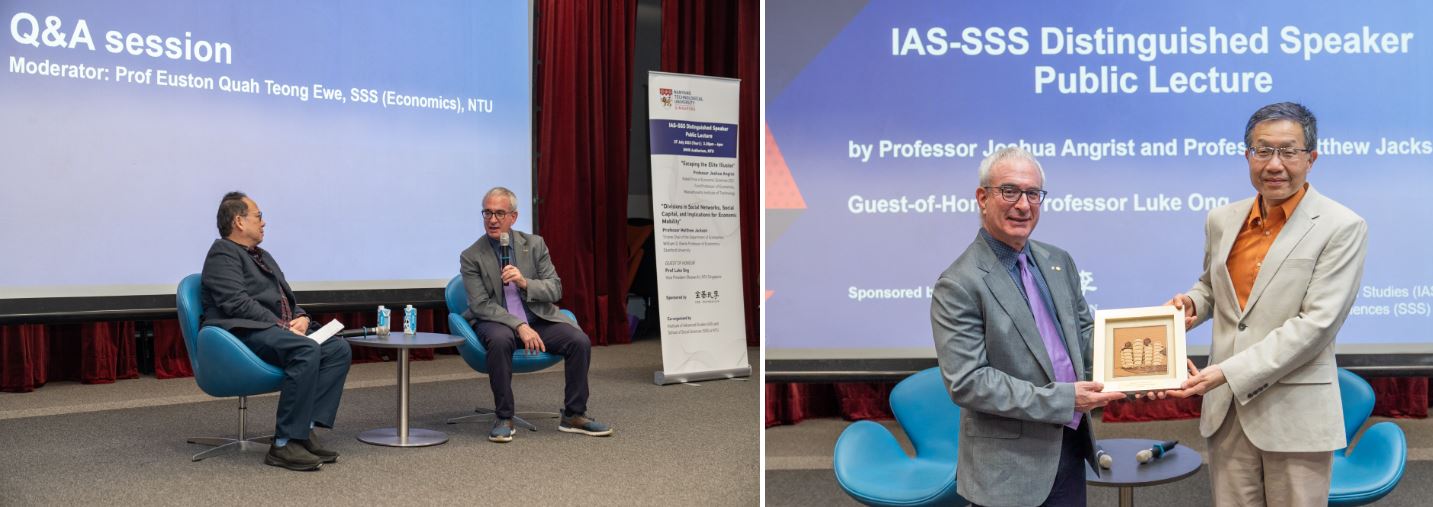 [lef] Engaging Q&A session moderated by Prof Euston Quah. [Right] Prof Luke Ong presenting memento to Prof Joshua Angrist.
[lef] Engaging Q&A session moderated by Prof Euston Quah. [Right] Prof Luke Ong presenting memento to Prof Joshua Angrist.